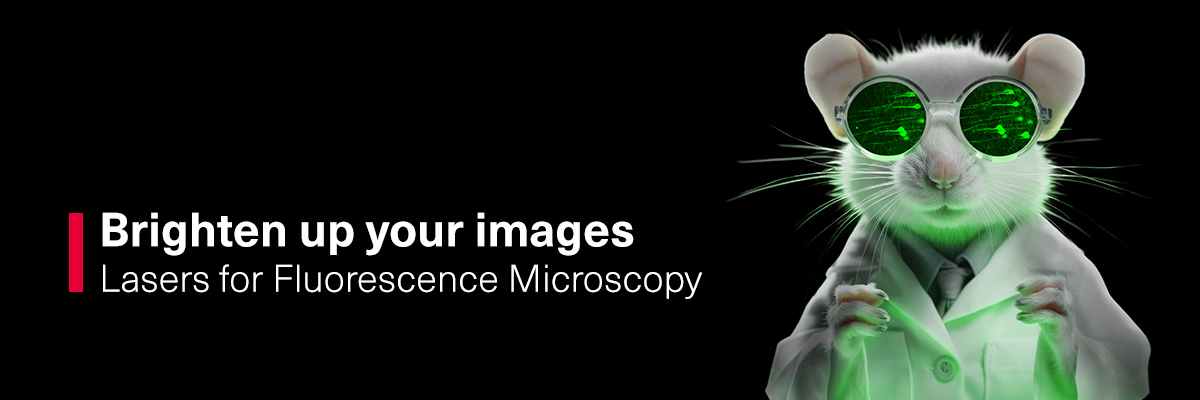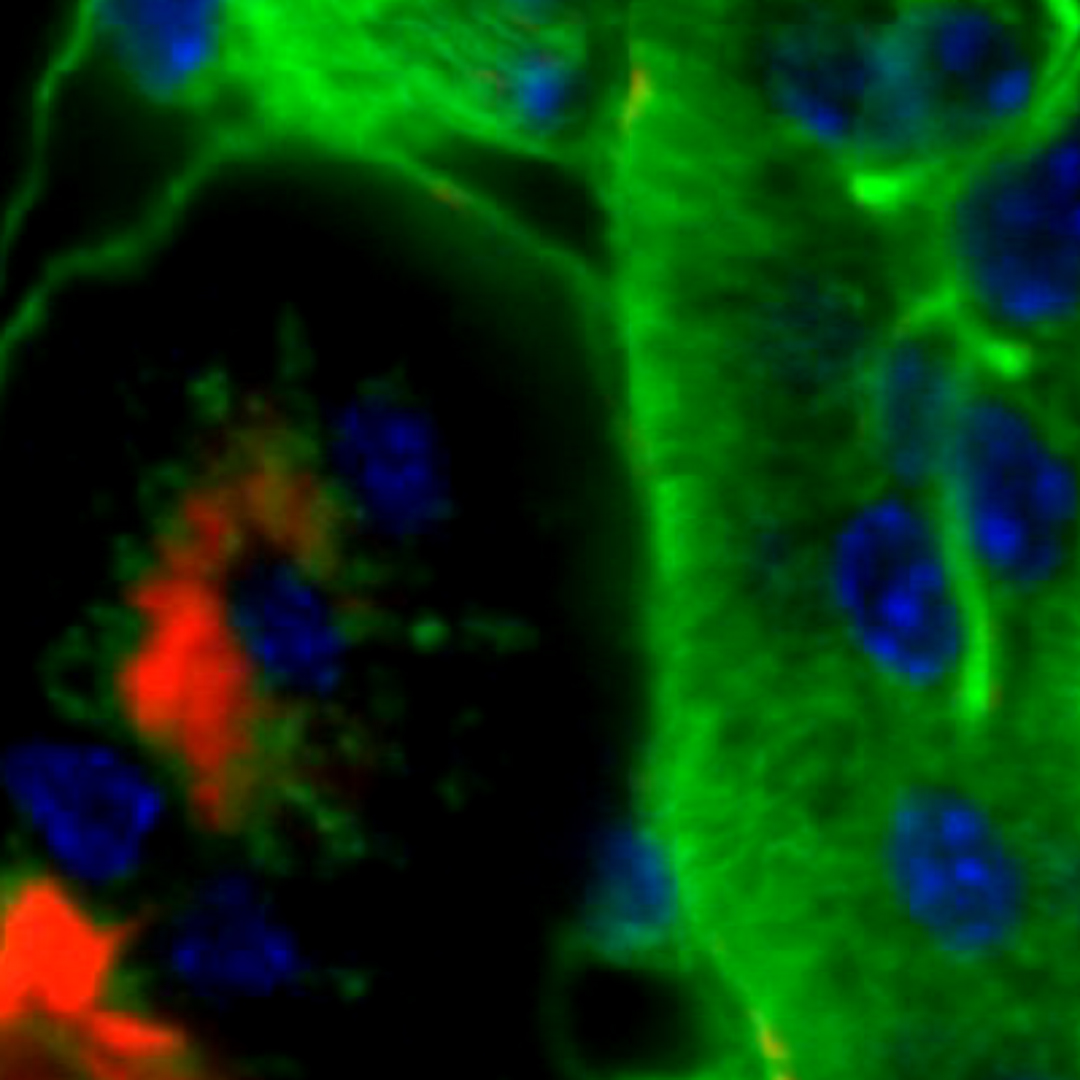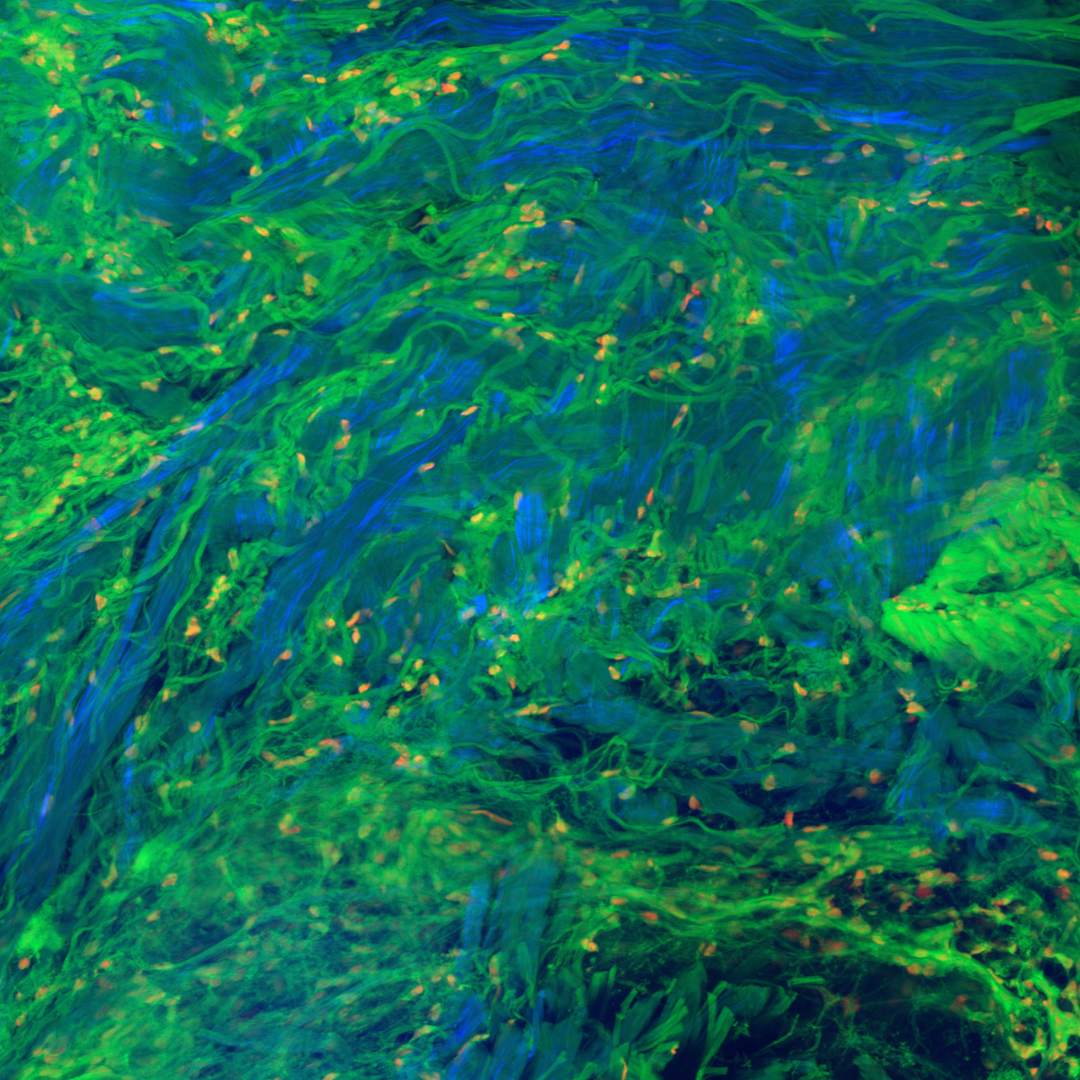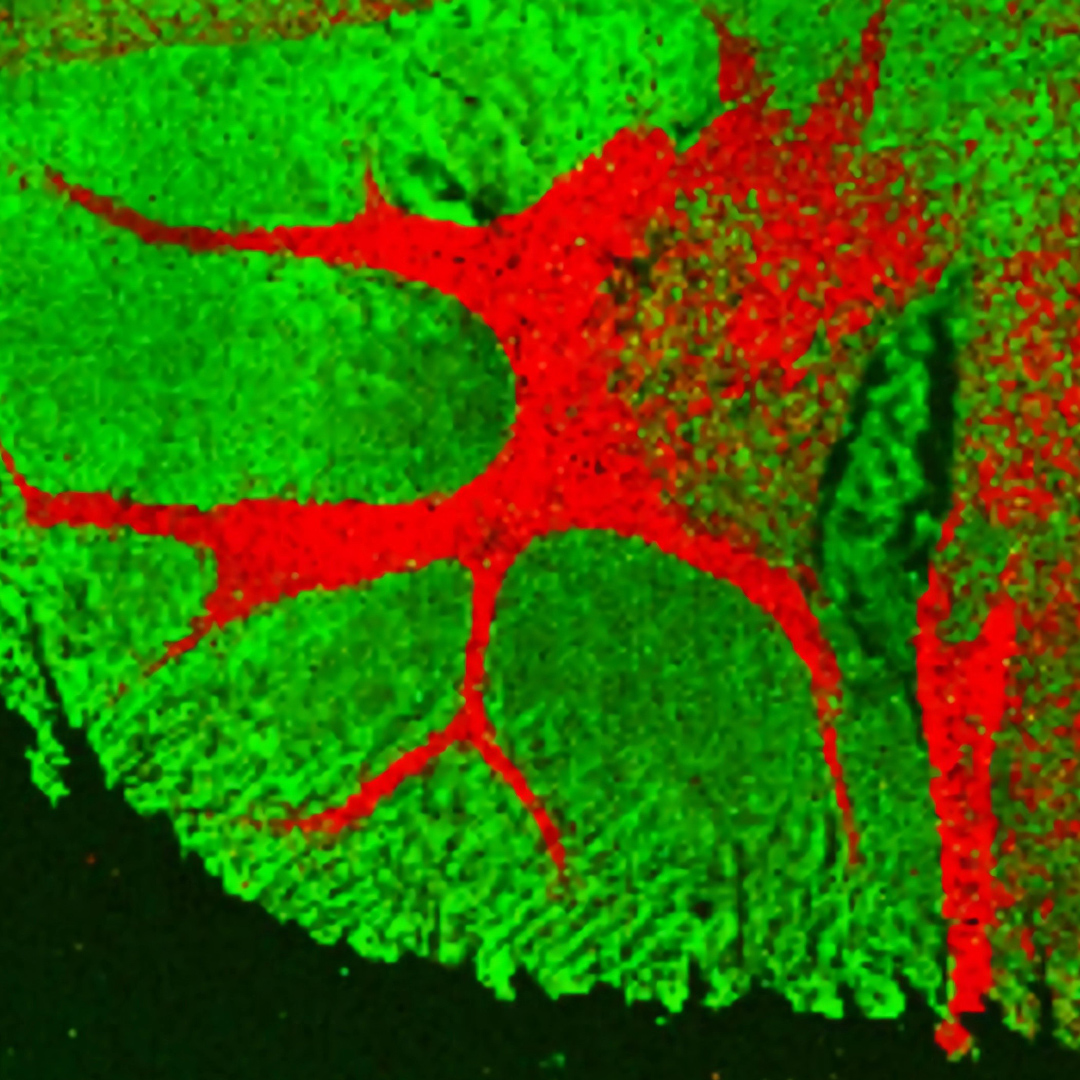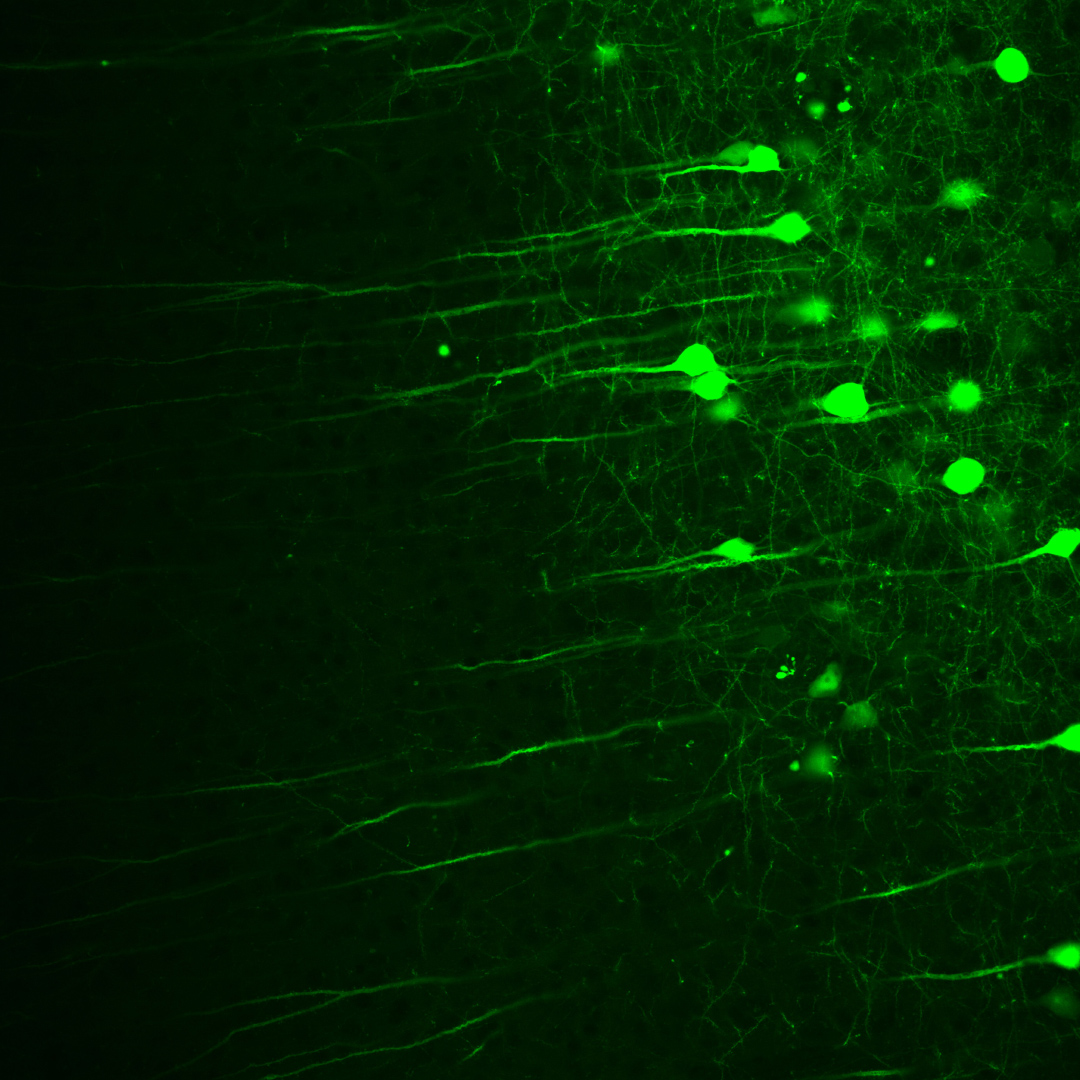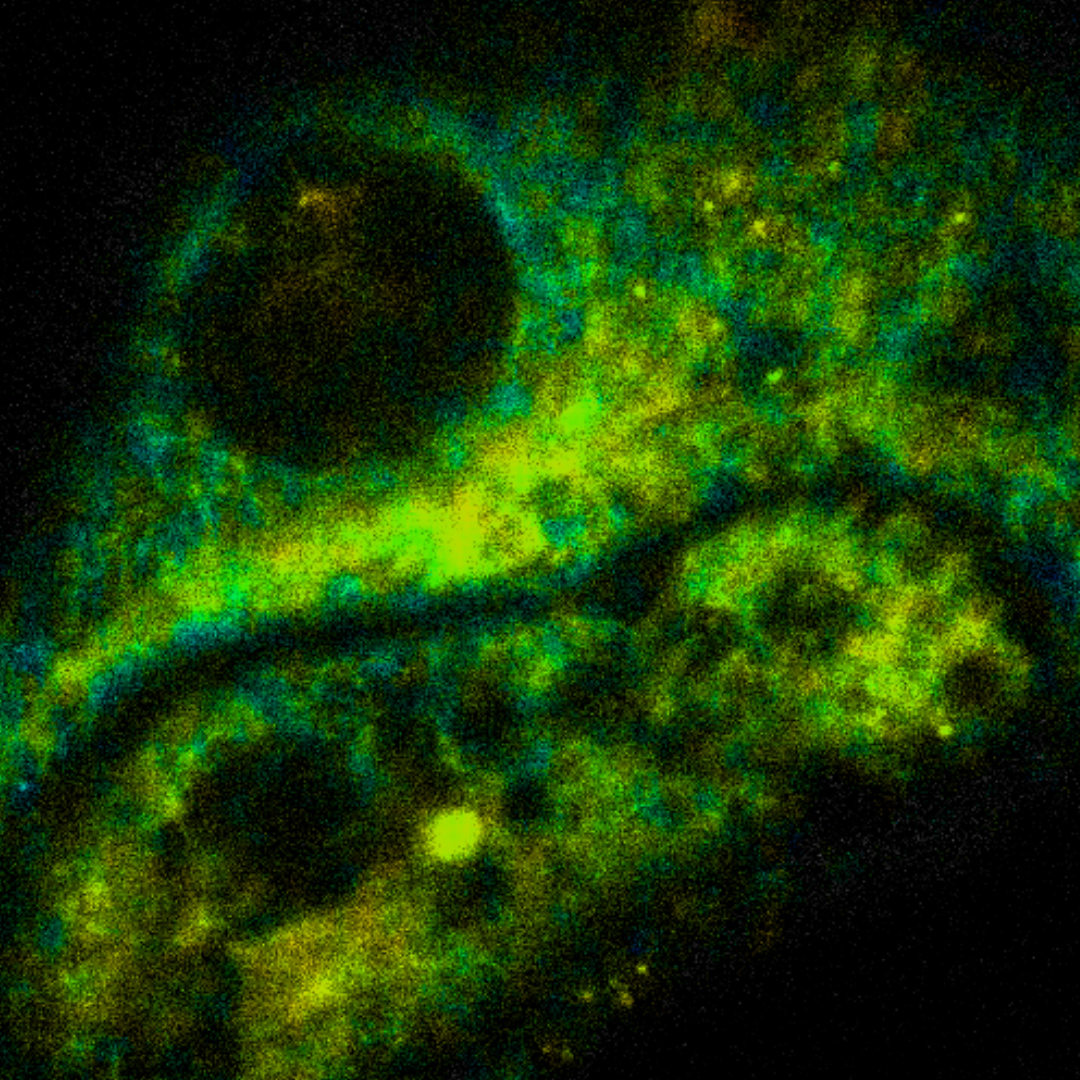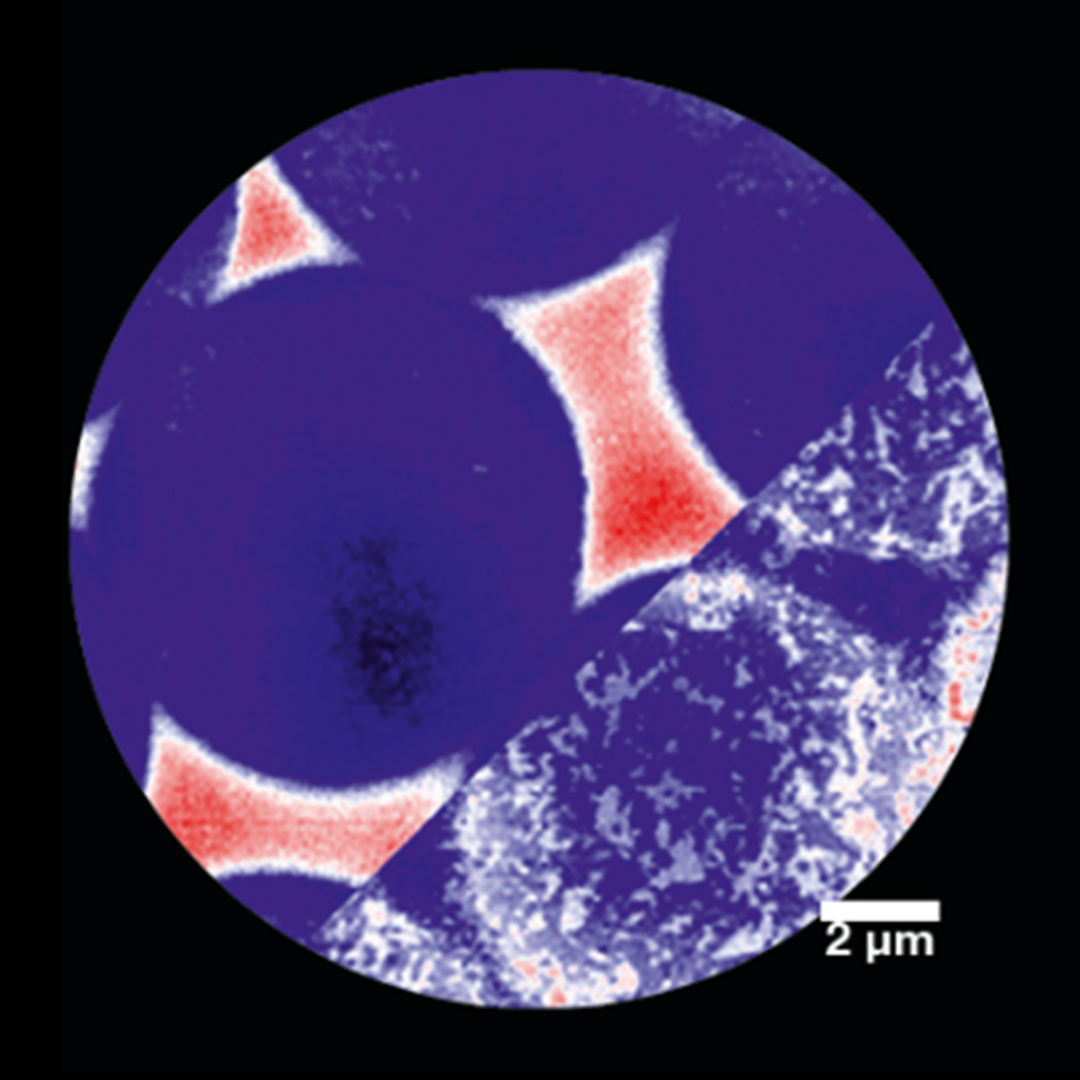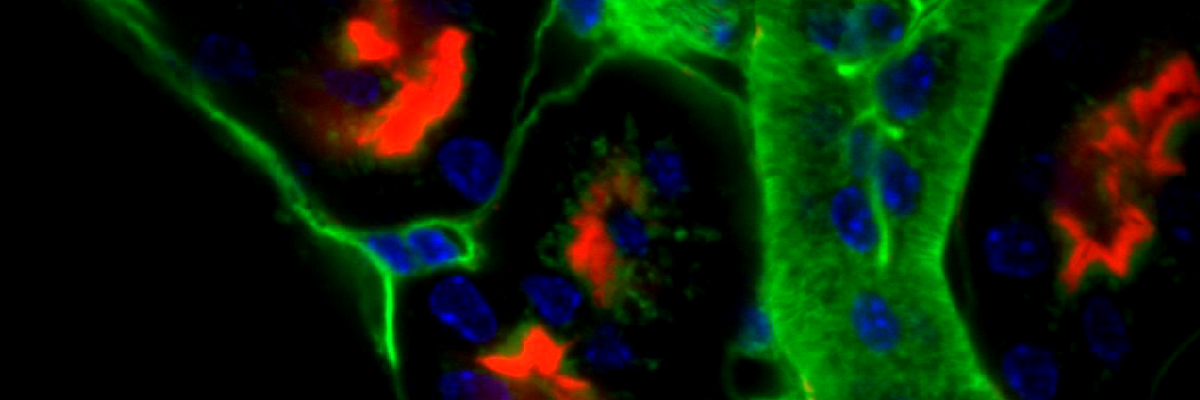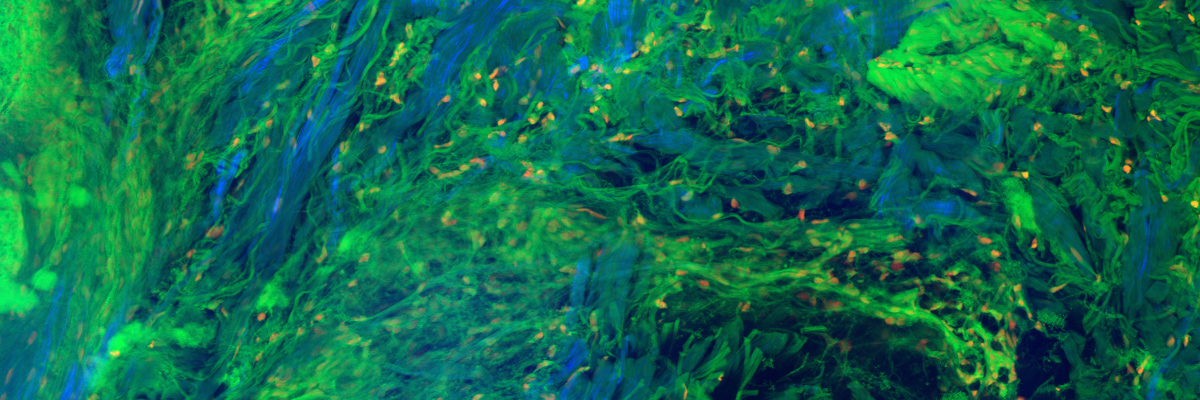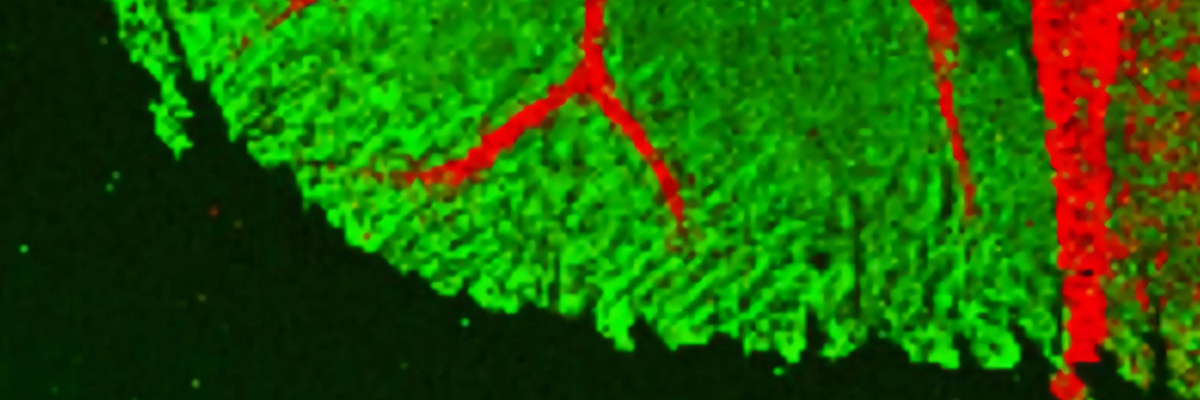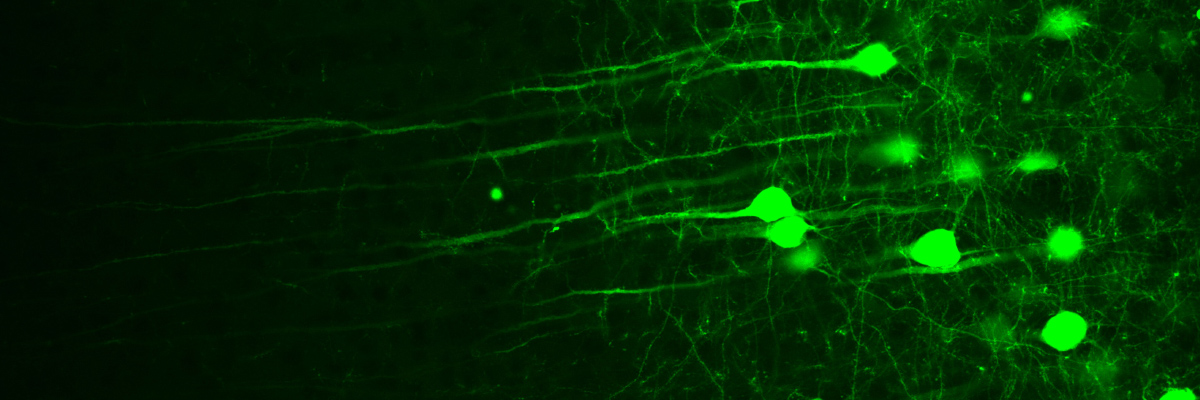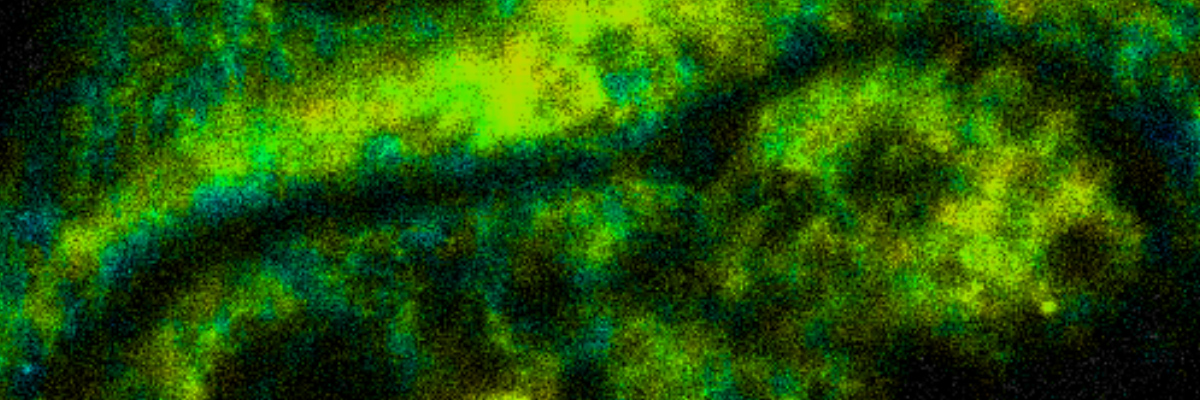Optical microscopy
Lasers for simplifying microscopy
Optical microscopes are used to study objects that are too small to be seen with the naked eye. These can be organic cells, semiconductor surfaces, or even single molecules. Advanced imaging techniques require a high intensity, coherent light source, which is why lasers are used today.
TOPTICA Photonics offers a multitude of laser solutions for various advanced, optical microscopy techniques. High performance and low cost of ownership are combined with user-friendly design of our lasers. TOPTICA’s mission is to build lasers that simplify microscopy, making us the ideal partner for both industrial and scientific customers.
Explore laser choices by application
Fluorescence microscopy can provide rich insights into organic and inorganic samples in life science and materials sciences. A wide range of laser wavelengths is required to match the fluorophore of interest. Confocal laser scanning microscopes (LSM) are commonly used, which can reconstruct three-dimensional images with high optical resolution and contrast.
TOPTICA's offer
TOPTICAs diode lasers and multi-laser engines offer high beam quality, high power stability and excellentlifetime at a very competetive price. In addition, our lasers and laser engines feature optimized modulation capabilities for superior performance. Microscopy-optimized laser sources reduce investment costs and optical system complexity.
For non-linear microscopy applications TOPTICA offers a broad wide range of femtosecond fiber lasers. The FemtoFiber laser family has proven its outstanding performance and suitability for in-vivo imaging and other advanced non-linear microscopy techniques.
Matching Lasers
| System | Key wavelengths | Key benefits |
|---|---|---|
| iBeam smart iBeam smart PT | 400 .. 850 nm | Compact individual lasers for most common fluorophores |
| Multi-Laser Engines | 400 - 800 nm | Long term stability via COOLAC automatic alignment. |
| FemtoFiber ultra | 780 / 920 / 1050 nm | Clean Pulse technology, fully turn-key with AOM and GDD |
| FemtoFiber smart 780 | 780 nm | One-box, low power consumption |
Non-linear microscopy techniques, such as 2-photon fluorescence microscopy or second harmonic generation (SHG) microscopy, have become key technologies in biological imaging, enabling three-dimensional, non-invasive studies of tissue with subcellular resolution on the micrometer scale. In contrast to conventional linear fluorescence microscopy, the nonlinear character and the longer excitation wavelengths offer the key advantages of greater probing depth and lower phototoxicity.
TOPTICA's offer
TOPTICA’s femtosecond fiber lasers are easy to use and offer optimal performance. In particular, TOPTICA’s FemtoFiber ultra lasers are ideally suited for imaging green (GFP), red (RFP), blue (BFP) fluorescent proteins, autofluorescence, or SHG signals to address highly relevant biological questions. It is no wonder that these laser systems are already widely used in nonlinear microscopes worldwide.
Matching lasers
| System | Key wavelengths | Key benefits |
|---|---|---|
| FemtoFiber ultra | 780 / 920 / 1050 nm | Clean Pulse technology, fully turn-key with AOM and GDD |
| FemtoFiber ultra with Fiber Delivery | 920 / 1050 nm | Replacing free-space paths between laser and microscope with a simple FC/APC fiber connection |
| FemtoFiber ultra dual-color | 780 / 920 / 1050 nm | Optically synchronized dual-color, no laser wavelength tuning is required |
| FemtoFiber smart 780 | 780 nm | One-box, low power consumption |
| FemtoFiber smart 780 PT | 780 nm | For handheld and/or battery driven inspection devices |
When it comes to quality assurance and process control, one of the most powerful tools is µ-Raman spectroscopy. Researchers benefit from this label-free, precise and powerful method to detect unwanted particles or to examine the composition of specimen.
Raman microscopy is widely used for material characterization, pharmaceuticals, forensics, and environmental analysis due to its non-destructive, label-free chemical imaging capabilities. The semiconductor industry uses it for stress analysis and defect detection. Additionally, it plays a crucial role in geology for mineral identification and in environmental science for detecting microplastics and pollutants. Its versatility makes it a powerful tool across research and industrial applications.
TOPTICA's offer
TOPTICA’s diode lasers make use of different technologies to address the needs of Raman microscopy. Wavelengths from the deep UV all the way to NIR, paired with narrow laser linewidths ensure high spectral resolution with a wide variety of biological, organic, and inorganic samples. Diffraction-limited beam quality and high powers boost image quality.
Matching lasers
| System | Key wavelengths | Key Benefits |
|---|---|---|
| iBeam smart WS | 785 nm | One-box, compact solution with high output powers up to 250 mW for better signal-to-noise ratio, convenient fiber-coupling |
| TopMode | 405 nm | Short wavelength with increased Raman intensity ideal for inorganic materials which do not show fluorescence |
| TopWave | 229 / 266 nm | Deep UV excitation helps separate Raman and fluorescence signals |
Non-linear fluorescence microscopy is the state-of-the-art technique for direct spatiotemporal visualization of neurons and neuronal activity in living animals. The key fluorescent proteins for such experiments are based on green fluorescent protein (GFP) and red fluorescent protein (RFP), which can be excited by 2-photon absorption at 920 nm and 1050 nm, respectively.
In recent years, there has been a rapid shift toward fixed-wavelength mode-locked femtosecond fiber lasers. These laser systems offer a cost-effectiveand easy-to-use alternative for two-photon microscopy applications, especially in neuroscience.
TOPTICA's offer
TOPTICA’s femtosecond fiber lasers offer optimal performance and ease of use. Especially for neuroscience applications, TOPTICA’sFemtoFiber ultra lasers are ideally suited to address biological questions by imaging green (GFP) and red fluorescent proteins (RFP), and are already widely used in nonlinear microscopes.
| System | Key wavelengths | Key benefits |
|---|---|---|
| FemtoFiber ultra | 780, 920, 1050 nm | Clean Pulse technology, fully turn-key with AOM and GDD |
| FemtoFiber ultra with Fiber Delivery | 920, 1050 nm | Replacing free-space paths between laser and microscope with a simple FC/APC fiber connection |
| FemtoFiber ultra dual-color | 780, 920, 1050 nm | Optically synchronized dual-color, no laser wavelength tuning is required |
| FemtoFiber smart 780 | 780 nm | One-box, low power consumption |
Two-photon fluorescence lifetime imaging (FLIM) can provide insights beyond standard fluorescence microscopy and non-linear microscopy by analyzing fluorescence decay times. In addition, FLIM can be used as a label-free, autofluorescence technique and is therefore non-invasive. For example, simultaneous NADH and FAD decay measurements provide insight into the metabolic state of biological samples.
TOPTICA's offer
TOPTICA’s femtosecond fiber lasers are easy to use and offer optimal performance. In addition, a fast electronic trigger output serves as a reference for time-correlated single photon counting (TCSPC) electronics in fluorescence lifetime imaging (FLIM) and gated detectors.
Matching lasers
| System | Key wavelengths | Key benefits |
|---|---|---|
| FemtoFiber ultra | 780 / 920 / 1050 nm | Clean Pulse technology, fully turn-key with AOM and GDD |
| FemtoFiber ultra with Fiber Delivery | 920 / 1050 nm | Replacing free-space paths between laser and microscope with a simple FC/APC fiber connection |
| FemtoFiber ultra dual-color | 780 / 920 / 1050 nm | Optically synchronized dual-color, no laser wavelength tuning is required |
| FemtoFiber smart 780 | 780 nm | One-box, low power consumption |
Several modern microscopy techniques offer the possibility of non-destructive chemical imaging with a resolution beyond the optical diffraction limit (down to tens of nanometers). For example, by combining scanning atomic force microscopy (AFM) with near-field spectroscopy, the chemical contrast of nanoscaled features becomes visible. Examples of these technologies are Raman and fluorescence SNOM, TERS, SERS and scattering SNOM.
TOPTICA's offer
TOPTICA supports these techniques by providing excellent suitable lasers for the entire wavelength range from deep UV to mid-IR to detect as many material properties as possible.
Matching Lasers
| System | Key wavelengths | Key benefits |
|---|---|---|
| FemtoFiber dichro midIR | 5 - 15 µm, 20 - 60 THz, 670 - 2000 cm-1 (tuning range) | Broadband mid-infrared source |
| TeraFlash pro | 0.1 - 6.5 THz (broadband) | High-bandwidth THz spectometer |
| Optical-Pump THz-Probe Systems | TeraFlash pro + any FF Ultra, e.g. 390 / 780 / 1050 nm | Optical-Pump THz-Probe (OPTP) measurements, also known as Time-Resolved Terahertz Spectroscopy (TRTS) |
| iBeam smart | 375 .. 1064 nm | Compact single mode diode laser covering UV to NIR |
| iBeam smart WS | 468 .. 852 nm | Narrow linewidths and high output powers |

